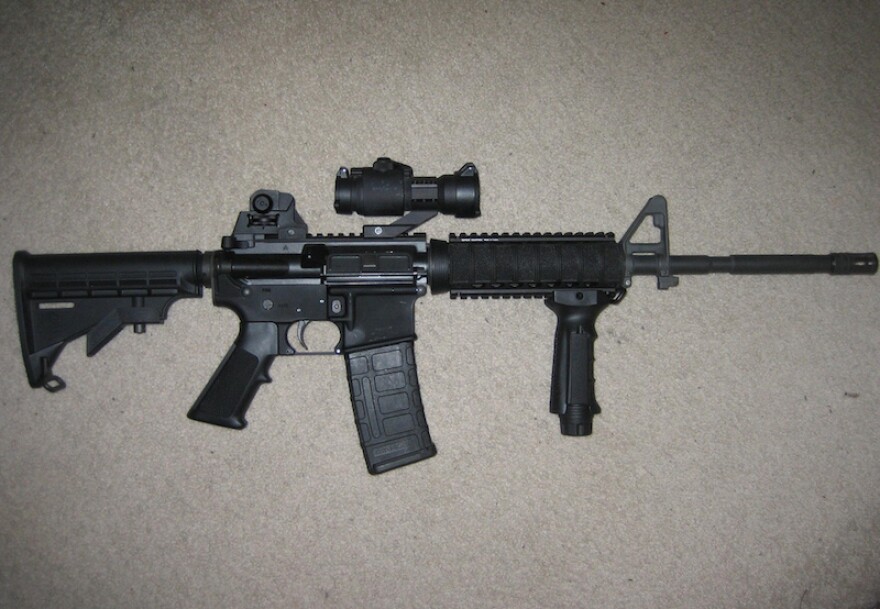The day after the biggest mass shooting in U.S. history, and the biggest terror attack in the U.S. since 9/11, President Obama addressed the nation.
Speaking to an issue he has addressed repeatedly during his two terms in the White House, President Obama struck, if not a note of resignation, something close to it.
The "powerful assault rifle" the president referred to is the AR-15, a long weapon with an instantly recognizable profile that belies its military origins – a model quite popular here in Texas. Its private ownership is protected by the Second Amendment, of which there are two dominant and dissonant visions.
Two dominant and dissonant views of the Second Amendment prevail: One is that the amendment is as outdated as its contemporary, the musket, and was never intended to guarantee the citizen a right to use weapons as powerful as the pure killing machines of the modern military arsenal.
The other is that the Second Amendment is no less a deliberate check on the potential abuse of government power than are any of the other nine amendments in the Bill of Rights, as vital to the character of American self-government as the right to protest presidents, assemble in secret, or speak heresies against people in high places.
Does the AR-15 have a legitimate hunting purpose? Are there not better alternatives for self-defense? The Constitution is silent on sportsmen or burglars. But such questions do come up in the debate over the limits of gun ownership, nearly certain to be the next legal frontier given last week's Ninth Circuit opinion upholding restrictions on concealed carry in California.
But after yesterday, with much reporting on the weapon used and the right of the assailant to own it, what's fact and what's fiction?
Michelle Byington, a lawyer with Houston-based office of Walker & Byington, says in Florida and Texas, licenses are not required to possess, purchase or own a gun – only to use one.
Federal firearms licensed dealers sell guns like the AR-15.
"You go in, you fill out this form," Byington says. "It's called a Form 4473, which then allows the dealer to conduct a background check to make sure this individual does not hit the radar as a felon."
Convictions like domestic violence or owing back taxes preclude buyers from purchasing a gun or rifle. Byington says the background checks are covered by federal law, so a check in Florida is the same as in Texas. Reports have said Mateen had a concealed weapons holder permit – similar to Texas's license to carry a firearm.
"Here in Texas, if you are not a license holder, you have to go to a license-to-carry class," she says. "They teach you tactical response issues, they teach you about the use of force and the use of deadly force laws pertaining to firearms and then you've actually got to get out there on the range and shoot the firearm as well and pass that aspect of the class as well."
Byington says it's unlikely Mateen carried a gun capable of shooting 700 rounds a minute, as one Florida Congressman stated on CNN. A common misconception is that "AR" stands for assault rifle – Byington says it actually stands for Armalite rifle, the manufacturer.
"The guts of an AR-15 and the guts of a handgun are the exact same," she says. "With one pull of the trigger comes one bullet."
Military grade firearms are likely automatic rifles, which sprays multiple bullets with one pull of the trigger. The spray stops when the shooter takes his finger off the trigger.
"This here that was used in the massacre was a semi-automatic – one pull of the trigger, one bullet comes out," she says.
Byington says how quickly the assailant shot rounds would have depended more on how quickly he was able to reload a new magazine, rather than the ability of the gun to shoot multiple bullets with one pull of the trigger.
Post prepared by Hannah McBride.






